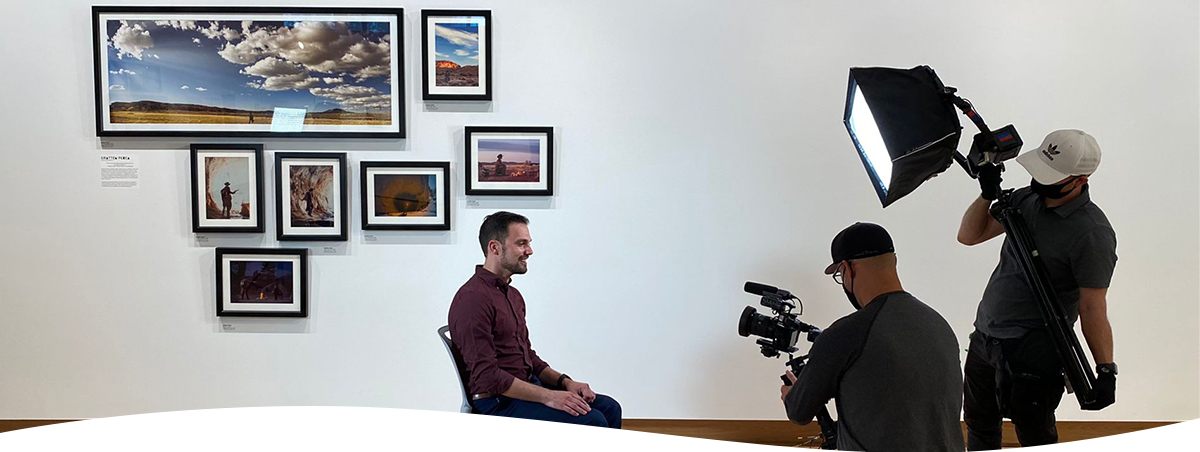
Frequently Asked Questions about the Arts Administration Program
Arts Administration is the systematic organization of business principles, people, and practices necessary to fund, maintain, promote, produce, and/or present an artistic product for a cultivated audience. It involves working with artists, patrons, staff, and other administrators. Responsibilities as an Arts Administrator may include, but are not limited to: strategic planning, marketing, fundraising, budgeting/finance, advocacy, education, program development, and community relations.
Arts Administration is a crucial part of the success of arts organizations and provides an avenue for you to share your love of the arts, while maintaining the lifestyle you may envision. Benefits to being an Arts Administrator often include salaried positions, insurance packages, regular office hours, vacation time, and job security.
Positions held by Arts Administration graduates are as diverse as the field itself and the many arts disciplines within it. Careers can be found in various not-for-profit and for-profit arts organizations as well as in not-for-profit organizations outside the arts arena. Examples of such positions often fall within the general categories of:
- Executive Leadership
- Production Management
- General Management
- Company Management
- Fundraising
- Human Resource Management
- Special Events Management
- Financial Management
- Marketing
- Advocacy
- Press and Public Relations
- Government Relations
- Publications & Information Technology
- Union Leadership
- Box Office Management
- Arts Education
Please visit admissions for more information on requirements.
The online Master of Arts degree track has no deadline. Applications are reviewed on a rolling basis.
GRE test scores are not required. Even though it is not required, students are welcome to take the GRE to give the Admissions Committee a more complete picture of academic success.
A nontraditional student is married, over 25, has a family, and/or are returning to school after an absence of three years or more. Nontraditional students are as welcome to apply as traditional students. In fact, nontraditional students’ varied experiences can add a beneficial perspective to the overall classroom experience. Prospective nontraditional graduate students must be sure to have the time to dedicate to a rigorous scholastic schedule, even with outside responsibilities.
The resume should include academic, professional, and volunteer experience.The quality of your leadership skills can be assessed through the following experiences, as included in a resume:
- Undergraduate leadership, experience, and extracurricular activities
- Volunteer work in any field
- Internship with professional arts or nonprofit organizations
- Paid professional experience in the arts or nonprofit field, as well as in other sectors
Graduate school differs from undergraduate study. It is more focused, more individualized, and requires more dedication to studies than do most undergraduate programs. Because you are a part of a smaller group, you must be ready to carry your weight with assignments, discussions, research, and projects. Your professors and classmates will expect you to:
- Read a large amount of material on a regular basis
- Take thorough lecture notes
- Lead and participate in class discussions, study sessions, and professional seminars
- Write intensive papers
- Prepare professional presentations
Graduate schools offer study in numerous areas, while professional schools provide training in specific areas, such as law, dentistry, or medicine. Careers for graduate school graduates are just as varied as the fields they can study, whereas law school graduates will most likely become lawyers and medical school graduates will most likely become doctors, even though there are many different types of both. SUU is considered a graduate school.
Please visit our faculty page to get to know our Arts Administration faculty.
Cedar City is located in southwestern Utah about 2 1/2 hours from Las Vegas, Nevada and 3 1/2 hours from Salt Lake City, Utah. The area has a population of approximately 26,000 people. It is known as the Festival City because of a variety of community activities that go on during the year. Learn more about the area.
Tuition and fee amounts can be found on the Southern Utah University Cashier’s Office webpage. Select "Tuition and Fees" and then select "Online Graduate Tuition Rates."
You can contact Financial Aid Office through their website.
Student loans, scholarships, and grants can be explored through the Financial Aid office on the SUU campus.
